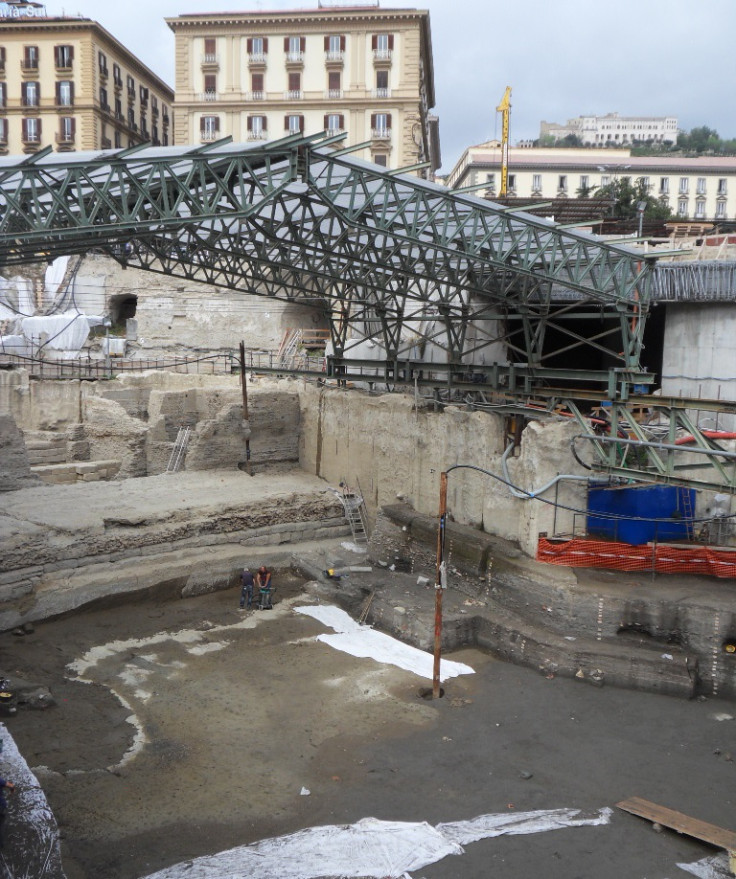Eruption of Mount Vesuvius led to 'complete overhaul' of Roman water supply in Neapolis

The 79 AD volcanic eruption of Mount Vesuvius led to a "complete overhaul" of the water supply network of Neapolis and nearby Roman cities, researchers have discovered. Analysis of an ancient harbour in Naples showed how the eruption, which destroyed Pompeii and Herculaneum, had a huge impact on the water supply elsewhere in the Roman Empire.
Prior to the eruption of Vesuvius, Naples – then known as Neapolis – was supplied with water through the Aqua Augusta or Serino aqueduct. The 140km-long aqueduct was built between 27 BC and 10 AD. The system involved large stone or concrete aqueducts with water distributed through lead pipes.
One of the major challenges in maintaining it was accounting for movements in the ground caused by volcanic systems. How the massive volcanic eruption of 79 AD affected the availability of water was not known, however.
In a study published in the journal PNAS, an international team of researchers investigated the impact by analysing lead isotopes from the ancient harbour of Naples. They were able to link lead in the water pipes to those trapped in the ancient sediments in the harbour – lead would have dissolved into the water and eventually found its way into the port.

Findings showed changes to the water systems over the first six centuries AD, including an abrupt change to the composition shortly after the volcanic eruption. The team says this indicates there was a "complete overhaul of Neapolis' water supply network" following the eruption of Vesuvius.
The shift to a different type of lead took place around 15 years after the volcano erupted, suggesting this is how long it took to carry out the repairs and replacement needed to the pipework. Researchers said this timescale indicates construction began on the Aqua Augusta "immediately after its destruction to allow for such a rapid switch".
"Urban centres have always been critically dependent on a stable water supply, and ancient cities relying on masonry aqueducts were particularly vulnerable to the disruption of their water distribution system by earthquakes and volcanic eruptions," the scientists wrote.
"The archaeological record of the major eruption of Vesuvius in AD 79 and its effect on the water supply of Naples... and its neighbouring cities illustrates well how efficiently the Roman world was able to mitigate the effects of major disasters on the daily life of its population."
© Copyright IBTimes 2025. All rights reserved.






















